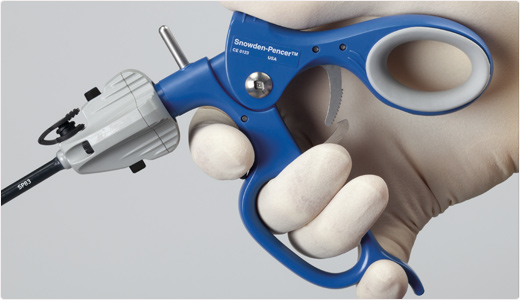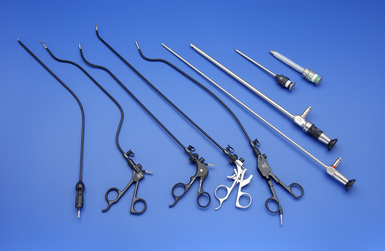Categories
Laparoscopic Instruments for Minimally Invasive Surgeries: Access & Exposure Equipment vs. Surgical Instruments

Laparoscopic surgery, or laparoscopy, also called a keyhole surgery, minimally invasive surgery (MIS), or bandaid surgery, is a modern surgical procedure that involves operations, such as inspection or diagnosing a certain health condition or surgical treating the abdominal or pelvis cavity through small incisions using special laparoscopy equipment and instruments. Laparoscopic surgery is more popular in the medical practice as it is more advantageous than any open surgical technique, and unlike the latter it includes shorter recovery time, reduced hemorrhaging and pain due to smaller incisions (0.5-1.5 cm). And all this thanks to laparoscope, which is the main element in any laparoscopic surgery. There are two common types of laparoscopes encountered by surgeons:
- laparoscope with a telescopic rod lens system (attached to a video camera, single-CCD or three-CCD);
- digital laparoscope (a tiny charge-coupled camera is connected to the laparoscope’s end).
Contents
Laparoscopy Equipment for Access & Exposure
The first step in a laparoscopic surgery is access and exposure, which is mainly supported by the following equipment:
- telescope (a rod lens that is 25 cm long and 10 mm in diameter, and has an eyepiece to view or fix a camera and a fibre-optic cable attachment transmitting light from an external light source);
- laparoscopic camera (a tiny digital camera attached to the telescope’s eyepiece and is used to pick up a video image);
- halogen or Xenon (high performance light that is transmitted via fibre-optic cable from its source to the telescope and highlights the operative field);
- video monitor (used to display images picked up by a laparoscopic camera);
- insufflator (delivers carbon dioxide gas from its cylinder to the patient in order to elevate the abdominal walls to create a better working field and better viewing of the internal organs);
- carbon dioxide gas cylinder (a container where carbon dioxide is stored);
- suction-irrigation unit (used in laparoscopic surgery for good quality suction & high power irrigation);
- auxiliary equipment (constant voltage transformer, cautery machine, cables, brushes, telescope anti-fog solution, etc.).
Laparoscopic Instruments for Common Laparoscopic Surgeries: Graspers, Scissors, Needle Holders

Surgeons performing laparoscopic surgery make use of a bulk of specific instruments (scissors, graspers, dissectors, etc.), which resemble open surgical instruments by serving the same function, but are much longer and narrower, and have small jaws allowing easy introduction and use of the instruments. Here we include the following instruments:
- scissors (Hook Scissors, Micro-Dissecting Scissors, Peritoneal Scissors, Metzenbaum Scissors, Premium Metzenbaum Scissors, Baby Metzenbaum Scissors, Dissecting & Suture Scissors, Supercut Scissors and others);
- grasping forceps or graspers (Atraumatic Fixation Forceps, Tubal Fixation Forceps, Fixation Forceps, Dual Cup Grasping Forceps, Retractrion-Grasping Forceps, Allis Grasping Forceps, Retrograde Grasping Forceps, Babcock Grasping Forceps, Debakey Forceps, Bowel Grasping Forceps, Duck Bill Grasper, Bellet Nose Grasper, Dorsey Intestinal Forceps, Glassman Clamping Forceps, Fundus Grasper and others);
- dissecting forceps or dissectors (Atraumatic Dissecting Forceps, Maryland Dissecting Forceps, Crile Dissecting Forceps, Overholt 60o Dissecting Forceps, Micro Dissecting Forceps, Mixter Spreader-Dissector, Dolphin Nose Dissecting Forceps, Duck Bill Dissecting Forceps, etc.);
- needle holders (Durogrip TC Needle Holder, In-Line Tungsten Carbide Neddle Holder, etc.);
- biopsy punches & specialty forceps (Aggressive Grasping Forceps, Alligator Grasping Forceps, Claw Grasper, Spoon Forcep and others).



